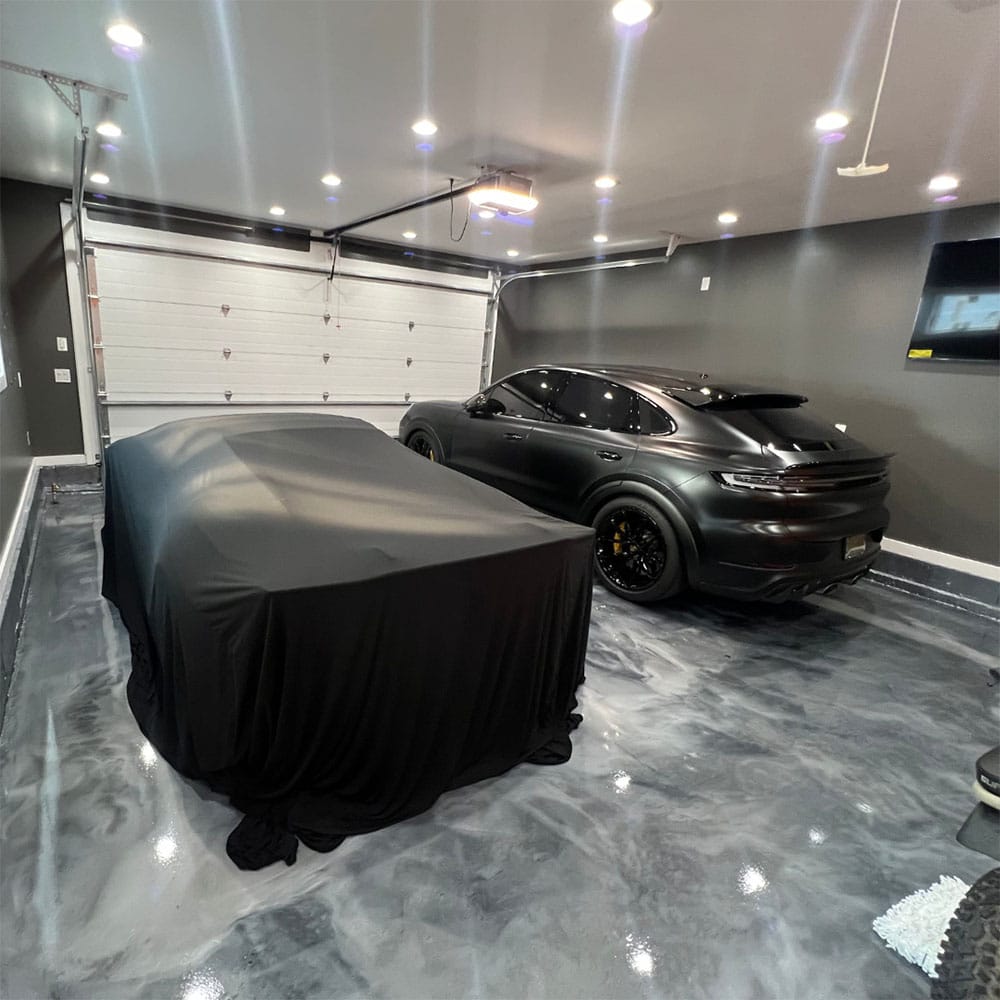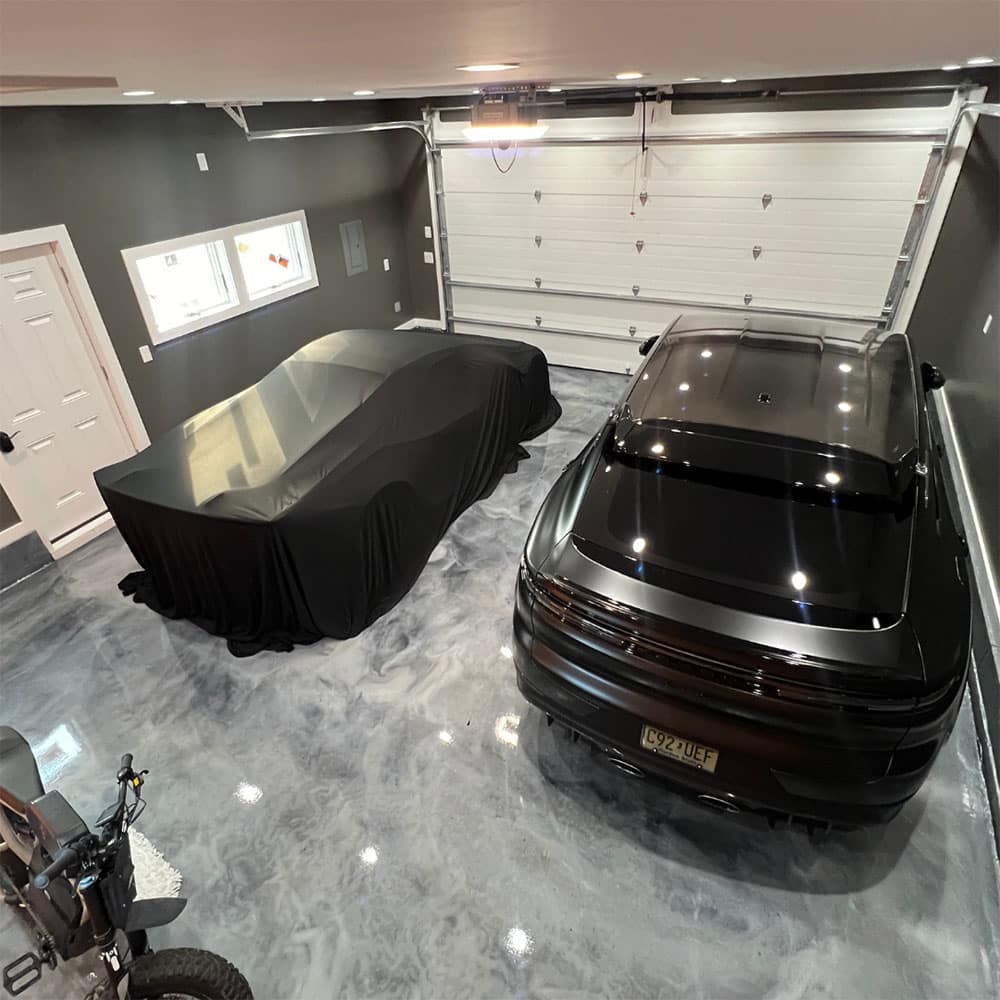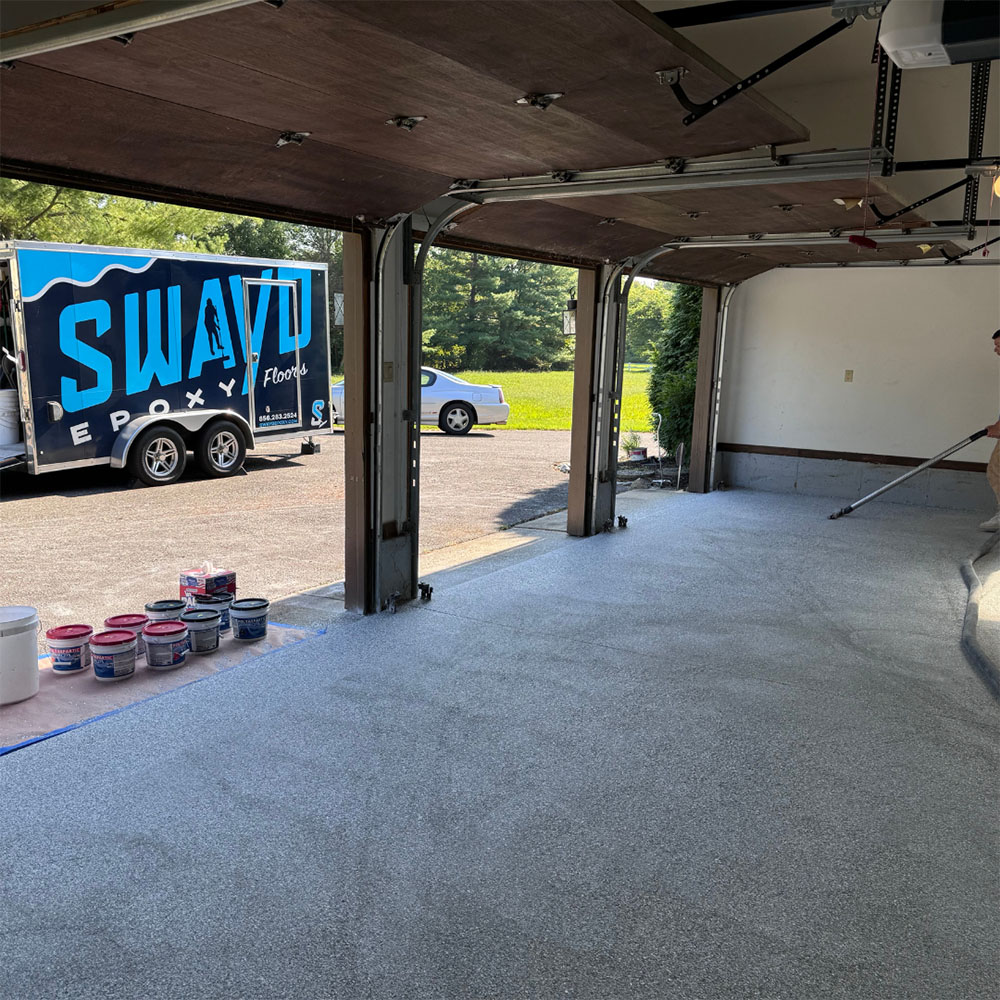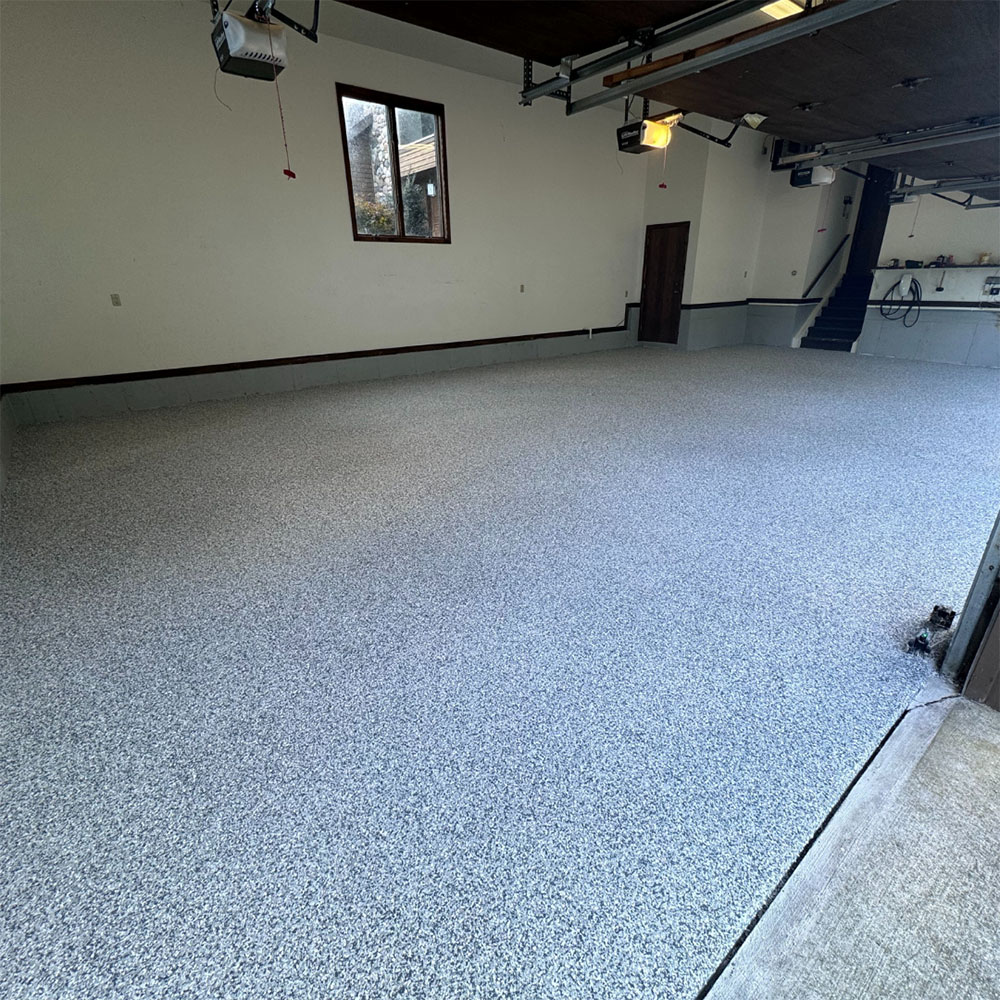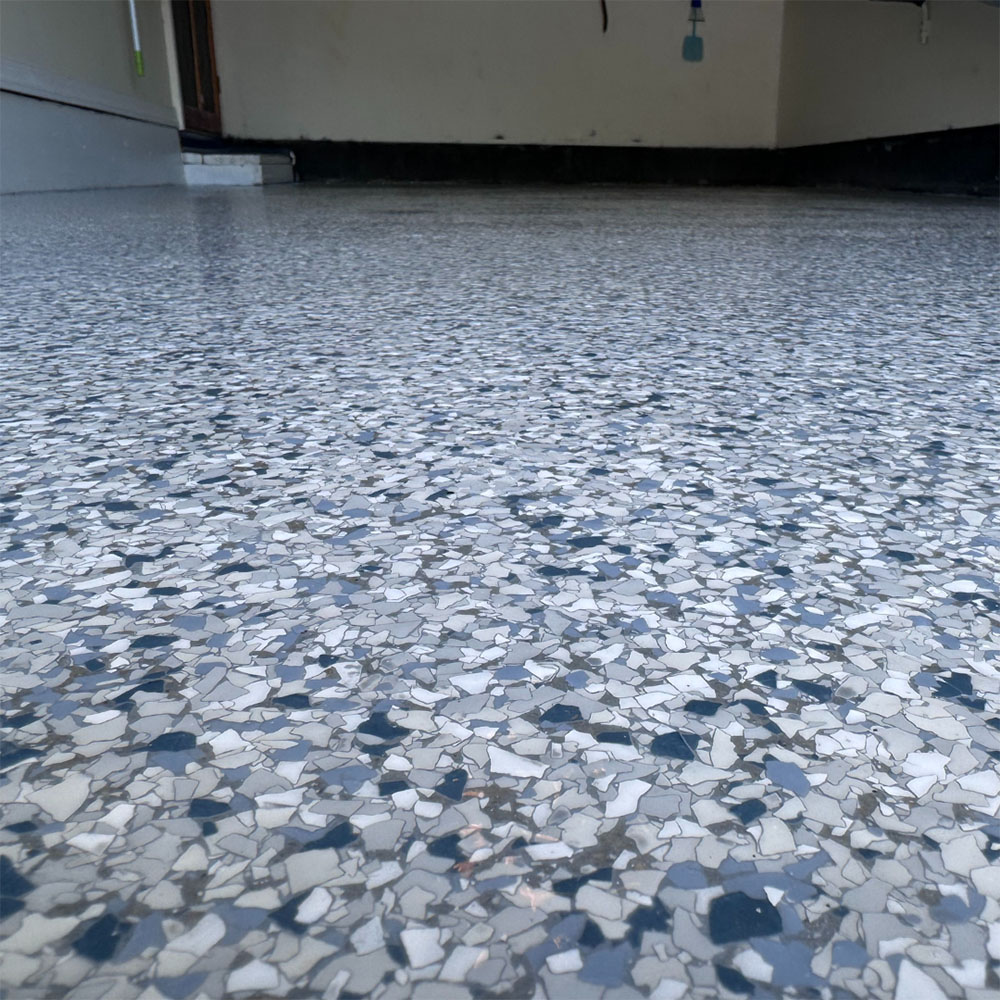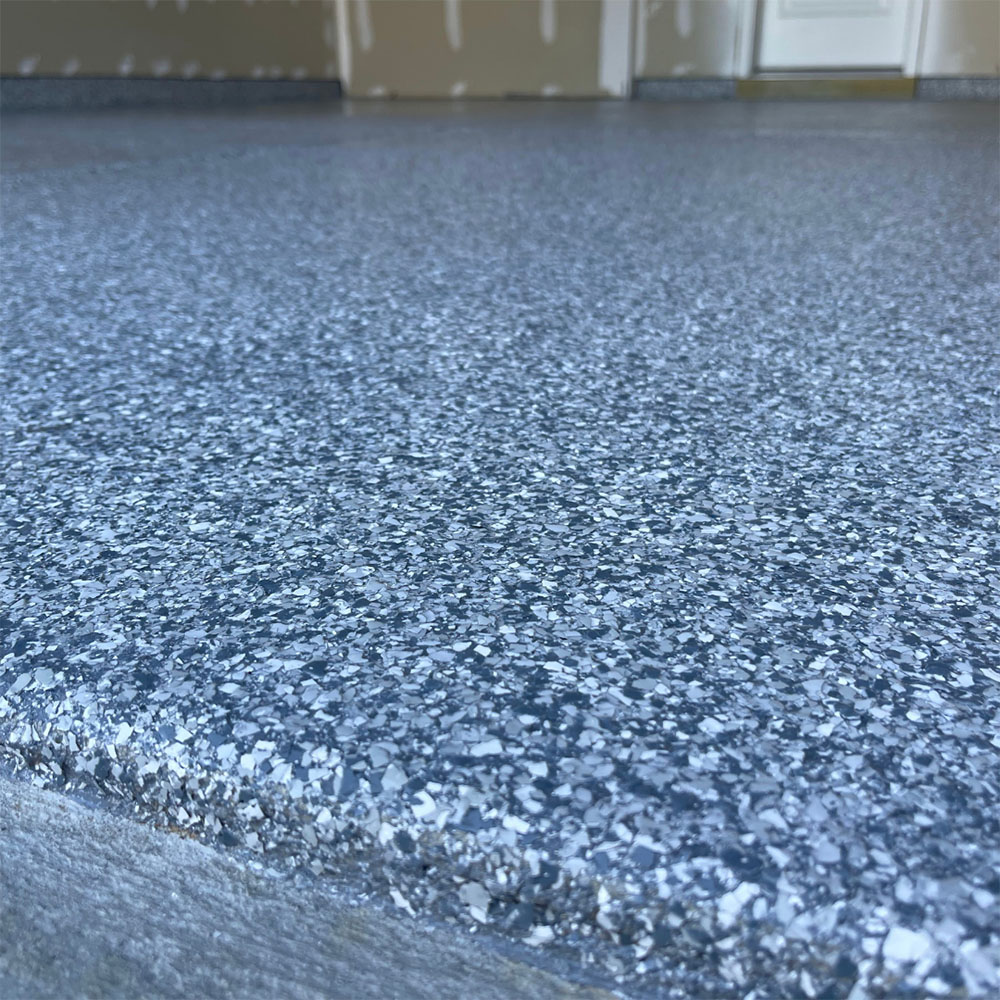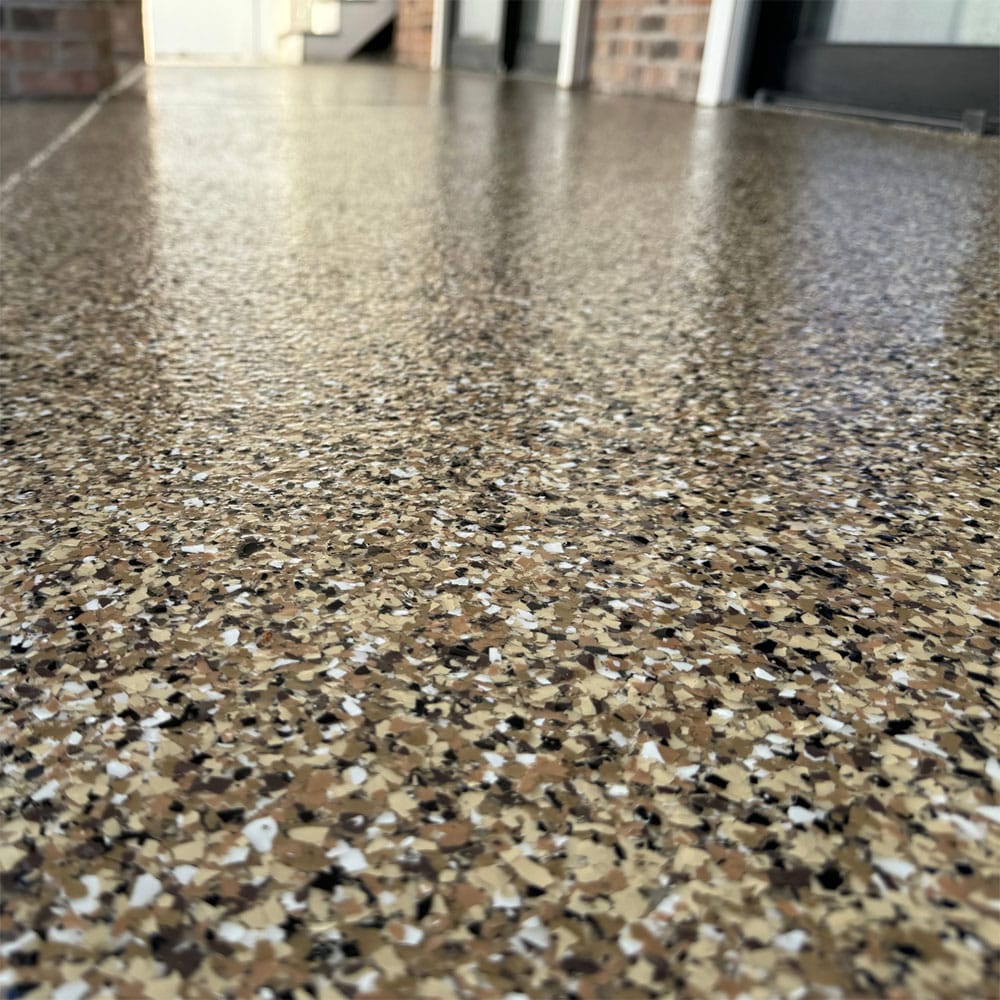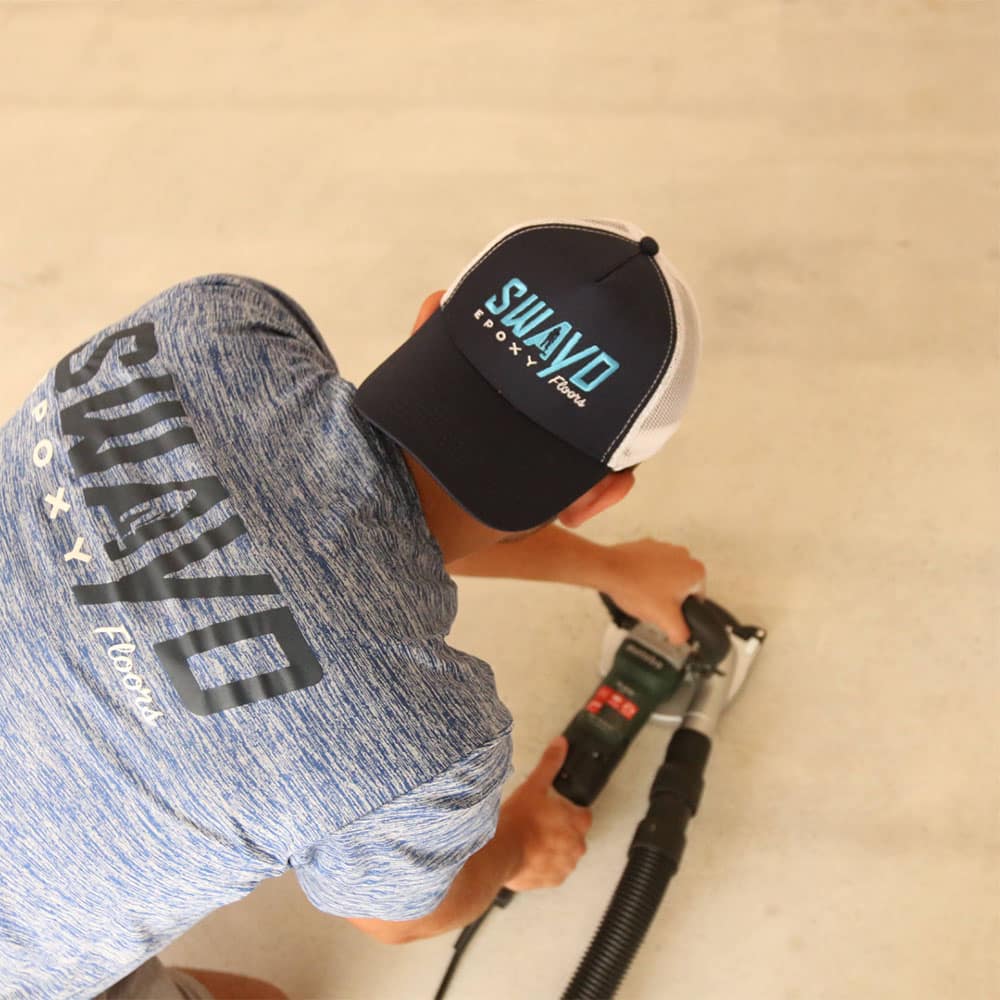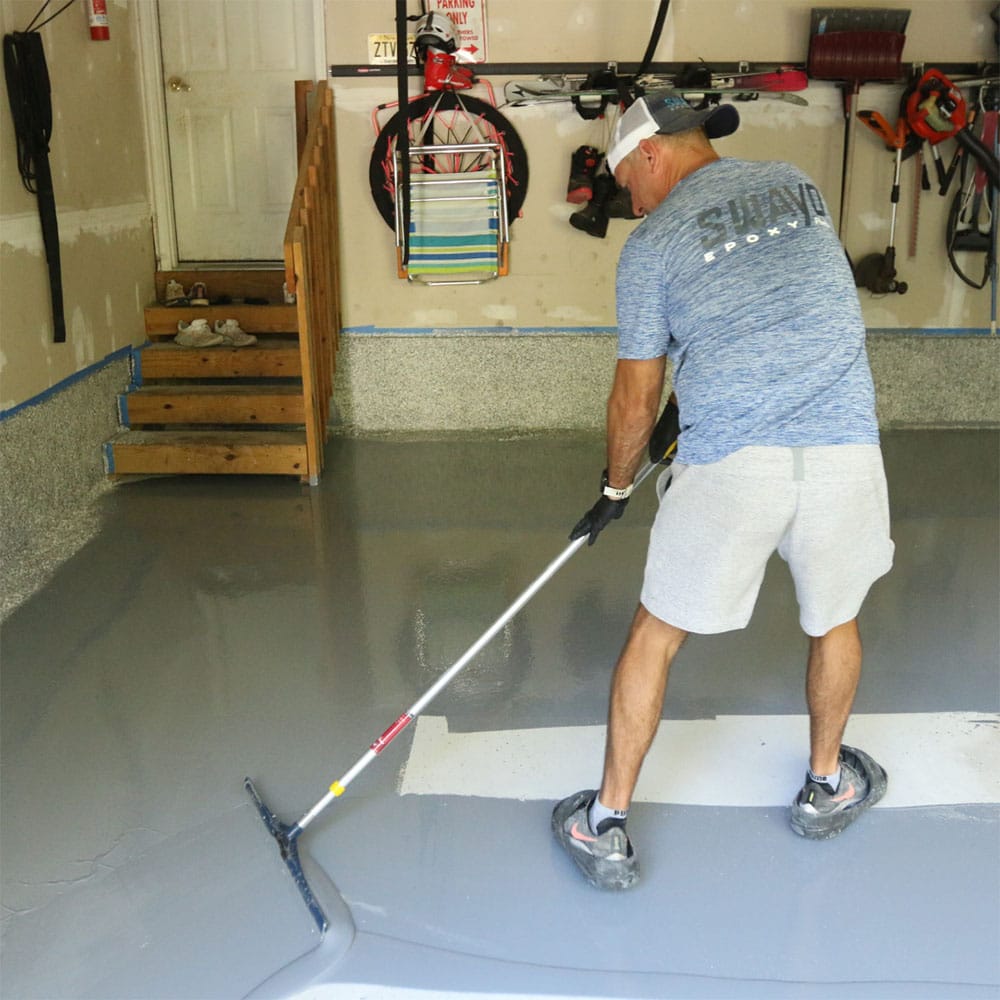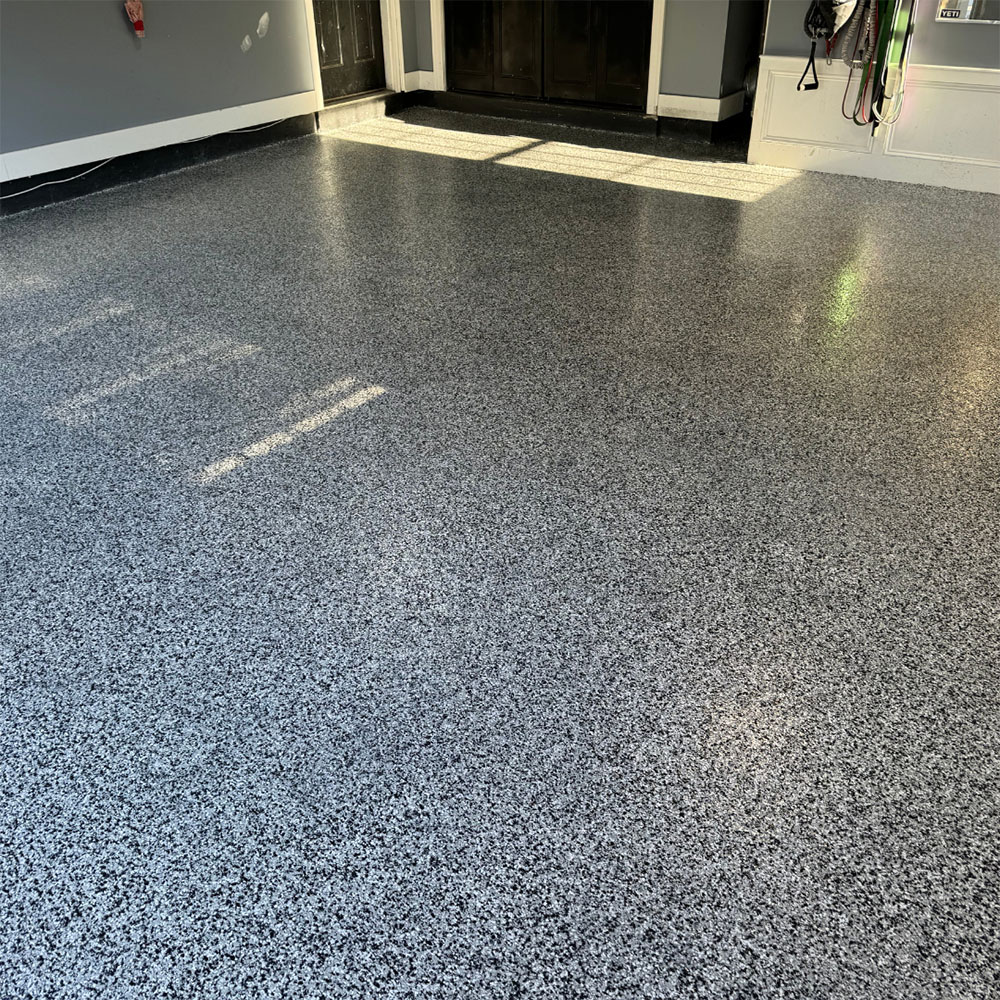Choosing the Right Epoxy Finish for Your Garage

Thinking about upgrading your garage floor? You’re not alone. Many homeowners are turning to epoxy finishes to transform their garages from dull, stained spaces into sleek, durable areas that look great and stand up to heavy use. Two popular options stand out: metallic epoxy and epoxy flake. But which one is right for you?
Both finishes offer unique benefits, and choosing between them can be tricky. You might be wondering about their looks, how tough they are, or how much work they’ll need to keep clean. Maybe you’re curious about how they’re installed or if one might be better for your specific garage needs.
Let’s dive into the world of epoxy flooring and find the perfect fit for your space.
Metallic Epoxy
Metallic epoxy is an eye-catching flooring option that combines epoxy resin with metallic pigments. When applied, it creates a smooth, glossy surface with swirling, three-dimensional patterns that resemble marble or flowing water. The metallic particles in the epoxy catch and reflect light, giving your garage floor depth and movement.
This type of flooring offers several key benefits. It’s highly durable, resistant to chemicals and stains, and can handle the weight of vehicles without cracking or chipping. The seamless surface makes it easy to clean, and it’s waterproof, preventing moisture from seeping into the concrete below. Plus, each metallic epoxy floor is unique, adding a touch of luxury and personalization to your garage space.
Epoxy Flake
Epoxy flake flooring, also known as chip flooring, is a popular garage floor coating that combines epoxy resin with colorful vinyl flakes. After applying a base coat of epoxy, installers scatter these flakes over the wet surface. They then seal everything with a clear topcoat. This method creates a textured, multi-colored finish that can mimic the look of granite or terrazzo.
One of the main advantages of epoxy flake flooring is its versatility. You can choose from a wide range of flake colors and sizes to create a custom look. The textured surface provides good slip resistance, making it safer in wet conditions. It’s also great at hiding dirt and small imperfections in the concrete underneath. Like metallic epoxy, flake flooring is tough and can withstand heavy use, spills, and temperature changes. It’s a practical choice that doesn’t skimp on style.
Design and Aesthetics
When it comes to looks, metallic epoxy, and epoxy flake floors offer two distinct styles for your garage. Metallic epoxy creates a smooth, glossy surface with flowing, abstract patterns. The effect can be subtle or bold, depending on the colors you choose. It’s like having a piece of modern art on your floor. This finish can make your garage feel more like an extension of your living space, perfect if you use it as a workshop or entertainment area.
Epoxy flake, on the other hand, gives you more control over the final look. You can mix and match flake colors and sizes to create anything from a subtle speckled effect to a bold, confetti-like pattern. This versatility means you can easily match your garage floor to your home’s color scheme or your personal style. The textured surface of flake flooring also hides dirt well, which can be a big plus in a busy garage.
Both options can dramatically change the feel of your garage. Metallic epoxy tends to create a more upscale, showroom-like ambiance. Epoxy flake often results in a more practical, finished look that still elevates the space beyond plain concrete. Whichever style catches your eye, you can preview it in your own garage with the visualizer tool.
Durability and Performance
When it comes to toughness, both metallic epoxy and epoxy flake flooring are strong contenders. They can both handle the weight of cars, tools, and heavy equipment without cracking or chipping. You won’t have to worry about damage from rolling toolboxes or jack stands with either option.
Both types of flooring also stand up well to spills. Oil, gasoline, and other automotive fluids won’t stain or damage the surface if cleaned up promptly. This resistance to chemicals makes both options great for garages where you do your own car maintenance.
Over time, you might notice some differences in wear and tear. Metallic epoxy, being smoother, can show scratches more easily than flake flooring. However, its seamless surface makes it easier to clean and maintain. Epoxy flake, with its textured surface, might hide minor scratches and scuffs better, but dirt can sometimes get trapped in the texture.
In the long run, both options are durable, but epoxy flake might have a slight edge in hiding wear and tear in a busy garage. That said, with proper care, both types of flooring can look great for many years.
Maintenance Requirements
Keeping your metallic epoxy floor clean is straightforward. A quick sweep or dust mop regularly will keep it looking sharp. For a deeper cleaning, you can use a damp mop with a mild soap solution. The smooth surface means dirt and spills wipe away easily. Avoid using abrasive cleaners or scrub brushes, as these might scratch the glossy finish.
Epoxy flake floors need similar care, but the textured surface might require a bit more effort. Sweeping and dust mopping work well for day-to-day maintenance. For thorough cleaning, you can use a mop or soft bristle brush with a pH-neutral cleaner. The texture helps hide dirt, but it can also trap some grime, so you might need to scrub a little more in high-traffic areas.
Overall, both types of flooring are low-maintenance compared to bare concrete. Metallic epoxy might have a slight edge in regards to ease of cleaning due to its smooth surface. However, epoxy flake’s ability to hide dirt might mean you can go longer between deep cleans. For a more detailed guide on keeping your epoxy floor in top shape, check out our article “6 Easy Steps to Maintain Your Epoxy Flooring”.
Installation Process
Installing metallic epoxy is a multi-step process that requires skill and patience. First, the concrete floor needs thorough preparation – cleaning, repairing any cracks, and often grinding to ensure good adhesion. Then, a base coat is applied, followed by the metallic epoxy layer. This is where the magic happens – the installer manipulates the wet epoxy to create those signature swirling patterns. Finally, a clear topcoat seals everything in place.
Epoxy flake installation follows a similar start. The floor prep is just as crucial. After the base coat goes down, the installer broadcasts the flakes over the wet surface. This step can be tricky to get right – you want even coverage without clumps. Once dry, excess flakes are swept away, and one or more clear topcoats are applied to lock in the flakes and provide a smooth finish.
Both processes are complex and best left to professionals. Metallic epoxy installation can be more time-consuming due to the artistic nature of creating the patterns. Epoxy flake might be slightly quicker to install, but it still requires precision and experience to achieve a good result.
For both types, you’ll need to stay off the floor for at least 24 hours after installation, with full curing taking several days. The exact time can vary based on temperature and humidity.
Slip Resistance, Temperature, and Customization Options
When it comes to slip resistance, epoxy flake floors have a natural advantage. The textured surface created by the flakes provides better traction, especially when wet. This can be a big plus if you live in a rainy area or if your garage sees a lot of water from car wash runoff. Metallic epoxy, while not inherently slippery, is smoother. However, you can add anti-slip additives to the topcoat if you’re concerned about safety.
Both flooring types handle temperature changes well, but they’re not identical. Metallic epoxy tends to be slightly more sensitive to extreme heat or cold, which can cause minor expansion or contraction. Epoxy flake floors, with their textured surface, might be a bit more forgiving in this regard. That said, both options are suitable for most garage environments.
For customization, both types offer plenty of options. With metallic epoxy, you can choose from a wide range of base colors and metallic pigments to create unique effects. The final look can vary from subtle to dramatic. Epoxy flake systems offer even more control over the final appearance. You can mix different flake colors and sizes to match your exact preferences, from solid-color looks to multi-toned designs.
Consider factors like your local climate, how much traffic your garage sees, and your style preferences. Both options will give you a durable, attractive floor that’s leagues ahead of plain concrete. Whichever you choose, you’ll end up with a garage floor that’s both functional and eye-catching.
Swayd Epoxy Floors offers free estimates for both metallic epoxy and epoxy flake installations. Our experts can assess your space, listen to your needs, and help you make the best choice for your garage. Contact us for a free estimate.
